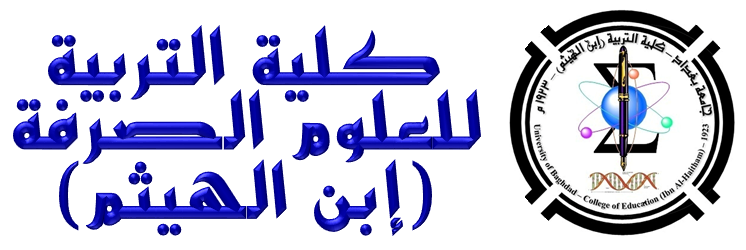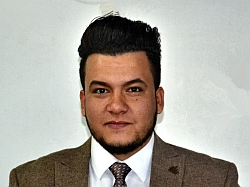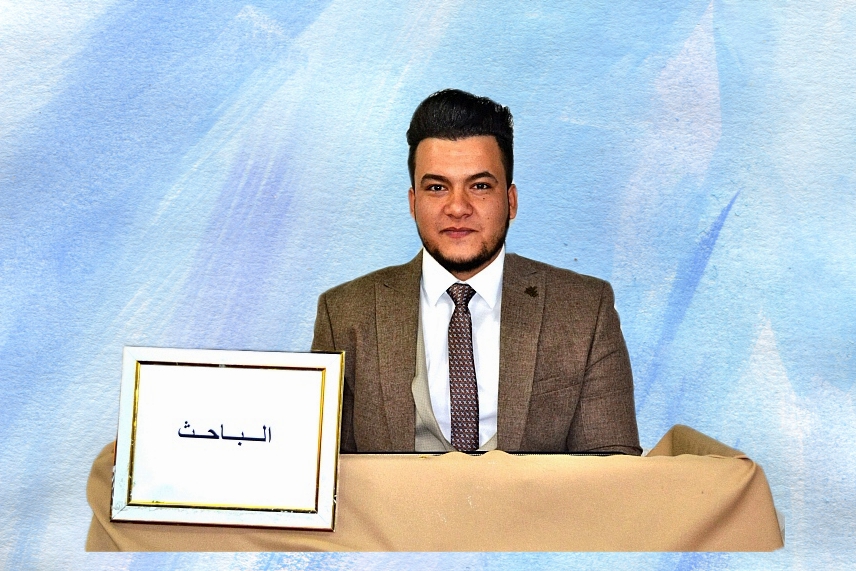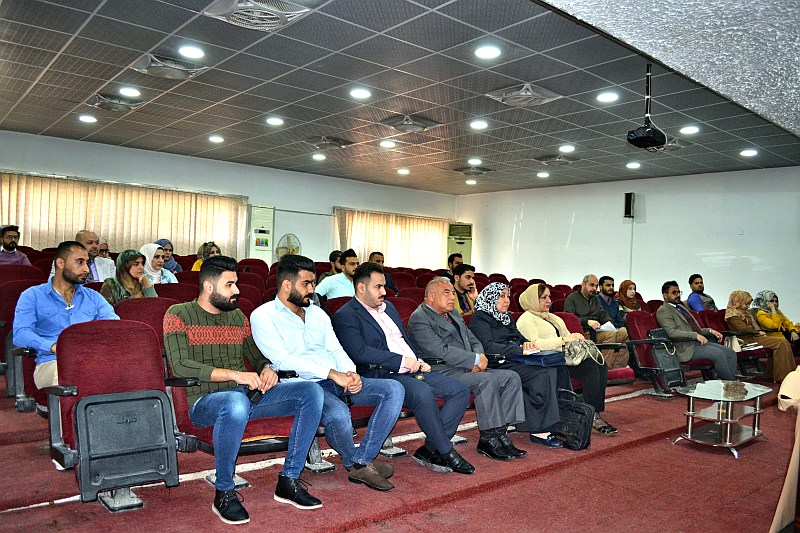ناقش قسم علوم الحياة في كلية التربية للعلوم الصرفة (ابن الهيثم) بجامعة بغداد رسالة الماجستير الموسومة (دراسة شكليانسجية مقارنة للمصفار في نوعين من الطيور العراقية) للطالب (ياسر سلام كريم ياسين) التي انجزت باشراف التدريسية في القسم (ا.م.د. ايمان سامي احمد) .
تهدف الدراسة الى الـــــــى دراســــــة مصــــــفار الطيـــــــور العراقية وخصوصا الـــــــبرية غير المــــــدروسة والمهددة بالانقراض حيث تم اختيار نوعين من الطيور العراقية تنتميان الى عائلتين مختلفتين متمثلة بطائر السلوى و اليمام المطوق للتعرف على الوصف الشكليائي والتركيب النسجي للمصفار في هذين النوعين.
واظهرت النتائج ما يأتي :-
اولا / فيما يخص الوصف الشكليائي:
* يكون المصفار في طائري موضوع الدراسة من النوع الرغاموي القصبي يتموضع في الجزء القحفي من التجويف الصدري البطني عند منطقة تفرع الرغامى الى قصبتين ويتخذ موقعاً وسطياً بين القلب والمريء.
* يتألف المصفار من تركيبين , تركيب صلد واخر طري يتمثل الاول بمكونات هيكلية تتضمن الجزء القحفي(الجزء الرغاموي المصفاري) , والجزء الوسطي( الطبلة) و الجزء الذيلي(الجزء القصبي المصفاري) و اخيراً الوتد . فيما يتمثل الثاني بتراكيب غشائية تشتمل, اغشية الطبلة الجانبية , اغشية الطبلة الوسطية, فضلاً عن الرباط بين القصبي الذي يعد مع العضلات المرتبط بالمصفار تراكيب ملحقة للمكونات الرئيسة .
* يتمثل كل من الجزء القحفي و الذيلي لمصفار كلا الطائرين بأربع حلقات غضروفية فيما تبين ان الجزء الوسطي لطائر السلوى يتمثل بحلقة قحفية مزدوجة وزوج من الحلقات الذيلية في حين يكون لطائر اليمام المطوق حلقة قحفية و اخرى ذيلية .
* تتخذ الطبلة في طائر السلوى شكلاً كالمظلة في حين تظهر في طائر اليمام المطوق اسطوانية الشكل اما الوتد فيظهر اسفينياً في كل من الطائرين.
* يظهر لطائري موضوع الدراسة الحالية زوجان من اغشية الطبلة , يتموضع الزوج الاول على جانبي حلقات الطبلة ومن جهتها الخارجية تدعى بأغشية الطبلة الجانبية فيما يتموضع الزوج الثاني عند الجانب الداخلي لكل فرعي الجزء القصبي المصفاري وتدعى بأغشية الطبلة الوسطية.
* يمتلك مصفار طائر السلوى زوجين من العضلات الخارجية في حين يظهر لطائر اليمام المطوق زوجان من العضلات الخارجية و زوجان من العضلات الداخلية وتحتضن الاخيرة الجزء الوسطي من المصفار لتعطيه شكلاً برميلياً.
* يقع بين فرعي الجزء القصبي المصفاري لطائري موضوع الدراسة الحالية تركيب يدعى بالرباط بين القصبي.
ثانيا / فيما يخص التركيب النسجي:
* اظهرت نتائج الدراسة الحالية ان المصفار في الطائرين يتألف من ثلاث غلالات متمثلة بالغلالة المخاطية المتضمنة البطانة الظهارية , وغلالة الصفيحة الاصيلة- تحت المخاطية و الغلالة البرانية .
* تتألف البطانة الظهارية للجزء الرغاموي المصفاري لطائر السلوى من نسيج عمودي مطبق كاذب مهدب في حين يكون من النوع الظهاري الحرشفي المطبق غير المتقرن في اليمام المطوق اما غلالة الصفيحة الاصيلة- تحت المخاطية فأنها مؤلفة من نسيج ضام مفكك في كلا الطائرين كما تبدو الغلالة البرانية مؤلفة من نسيج ضام مفكك تتخلله اوعية دموية و اعصاب .
* تتألف البطانة الظهارية للجزء القصبي المصفاري في طائري موضوع الدراسة من نسيج عمودي مطبق كاذب مهدب فيما تظهر في غلالة الصفيحة الاصيلة- تحت المخاطية و الغلالة البرانية من نسيج ضام مفكك لكلا الطائرين ايضاً.
* ان البطانة الظهارية لوتد مصفار طائري السلوى و اليمام المطوق تتألف من نسيج عمودي مطبق كاذب مهدب فيما تتألف غلالة الصفيحة الاصيلة- تحت المخاطية من نسيج ضام مفكك في ذكور واناث طائر السلوى الا انه يكون مؤلفاً من نسيج ضام كثيف في الذكور ومفككاً في اناث اليمام المطوق كما تبين ان هيكل الوتد في كلا طائري موضوع الدراسة يكون غضروفياً في الاناث و متعظماً في الذكور.
* تبين ان البطانة الظهارية لكلا غشائي الطبلة الجانبي و الوسطي لطائر السلوى مؤلفة من نسيج ظهاري عمودي مطبق كاذب غير مهدب في حين تكون في اليمام المطوق مؤلفة من نسيج ظهاري حرشفي مطبق فيما تظهر غلالة الصفيحة الاصيلة- تحت المخاطية لغشائي الطبلة في طائري موضوع الدراسة مؤلفة من نسيج ضام كثيف, كما تبين ان حلقات الطبلة تتمثل بغضاريف زجاجية في طائر السلوى فيما يبدو فيها التعظم في ذكور اليمام المطوق فقط .
* تتألف بطانة الشفة الجانبية لطائر السلوى من نسيج ظهاري مطبق مكعب في حين تظهر مؤلفة من نسيج ظهاري حرشفي مطبق في اليمام المطوق , اما بخصوص غلالة الصفيحة الاصيلة- تحت المخاطية فتبين ان النسيج في طائري موضوع الدراسة يتألف من نسيج ضام كثيف.
* تتألف البطانة الظهارية للشفة الوسطية من نسيج ظهاري حرشفي مطبق في طائر السلوى في حين يكون مؤلفاً من نسيج ظهاري عمودي مطبق كاذب في اليمام المطوق اما فيما يخص غلالة الصفيحة الاصيلة- تحت المخاطية فأنها تتألف من نسيج ضام كثيف غير منتظم في طائر السلوى الا انه يكون مؤلفاً من نسيج ضام كثيف منتظم في اليمام المطوق.
* يتباين توزيع او انعدام الخلايا الكأسية والغدد السنخية البسيطة بين النسيج الظهاري لأجزاء المصفار بين طائري موضوع الدراسة الحالية لكنه اتضح بشكل ملفت للنظر انعدام الخلايا الكأسية والغدد السنخية في الشفة الوسطية لطائر السلوى في حين تبين كثافتها في طائر اليمام المطوق .
* كما تباين توزيع الالياف المطاطة والمغراوية المتواجدة في غلالة الصفيحة الاصيلة- تحت المخاطية في اجزاء مصفار كلا الطائرين موضوع الدراسة اذ اوضحت النتائج تركز الالياف المطاطة تحت الظهارة في غشاء الطبلة الوسطي لطائر السلوى في حين تتركز الالياف المطاطة تحت الظهارة في اليمام المطوق ، فيما تبين تواجد الالياف المغراوية بكثافة تحت ظهارة غشاء الشفة الجانبي لكلا الطائرين موضوع الدراسة الا انهما تباينا في الترتيب اذ كان ترتيبهما بالاتجاه البطني – الظهري في طائر السلوى بينما كان ترتيبهما قحفياً- ذيلياً في اليمام المطوق اما غشاء الشفة الوسطي فقد كانت كثافة الالياف المطاطة نحو الخارج وتترتب بالاتجاه القحفي-الذيلي في طائر السلوى في حين كانت كثافة الالياف المغراوية تحت الظهارة و بالاتجاه القحفي – الذيلي في اليمام المطوق.
ثالثا / فيما يخص الدراسة الاحصائية :
* اظهرت نتائج الدراسة الحالية وجود فروق معنوية (0.001>P ) في معدل سمك الغلالات في طائر السلوى لكل من الجزء الرغاموي المصفاري و غشاء الطبلة الجانبي والجزء القصبي المصفاري اذ تكون اكثر سمكاً في الذكور مقارنةً مع الاناث كما تبين وجود فروق معنوية (0.001>P ) في معدل سمك الغلالات للشفة الجانبية و الوسطية التي تكون في الذكور اعلى مما هي عليه في الاناث و على عكس ذلك تبين وجود فروق معنوية في معدل سمك غشاء الطبلة الوسطي و الوتد اذ تكون اكثر سمكاً في الاناث مقارنةً مع ذكور الطائر نفسة.
* اما طائر اليمام المطوق فقد تبين عدم وجود فروق معنوية بين الذكور و الاناث للجزء الرغاموي المصفاري و القصبي المصفاري و غشاء الطبلة الجانبي في حين وجدت فروق معنوية (0.001>P ) في الشفة الجانبية و غشاء الطبلة الوسطي و الوتد اذ تبين معدل سمك الغلالات في الاناث كانت هي الاعلى مما في الذكور .
* لم تظهر اية فروق معنوية عند مقارنة ذكور طائري الدراسة الحالية و كذلك الحال بين اناثهما في كل من الجزء الرغاموي المصفاري و القصبي المصفاري و غشاء الطبلة الجانبي في حين وجدت فروق معنوية (0.001>P ) بين ذكور الطائرين في غشاء الطبلة الوسطي اذ تكون في ذكور السلوى اسمك مما هي علية في ذكور اليمام المطوق و على العكس من ذلك تكون الشفة الجانبية و الوتد في ذكور اليمام المطوق هي الأسمك.
*تبين وجود فروق معنوية (0.001>P ) بين اناث طائري الدراسة الحالية في كل من الشفة الجانبية و الوسطية و غشاء الطبلة الوسطي اذ تبين ان اناث اليمام المطوق تكون هي الأسمك مقارنةً بإناث السلوى.
افرزت نتائج الدراسة الحالية لمصفار طائري السلوى و اليمام المطوق مجموعة من النقاط تحتاج الى المزيد من الدراسة و التقصي لأجل الوصول الى الحقائق العلمية و بناءً الى ذلك اوصت الدراسة بما يأتي :-
1- اجراء دراسات اخرى على مصفار الطيور العراقية التي لم تنل الاهتمام العلمي الكافي.
2- اجراء دراسة معمقة في ترتيب الالياف المغراوية و المطاطة ضمن الاغشية المهتزة باستعمال ملونات خاصة .
3- قياس ابعاد تجويف و سمك الحلقات الغضروفية لأجزاء المصفار.
4- اجراء دراسة معمقة لمكونات العضلات و عن كيفية ارتباطها بأجزاء المصفار.
5- استعمال ملون ماسون ثلاثي الكروم Masson’s Trichrome للتحري عن الالياف المغراوية Collagen Fibers .
6- استعمال ملون الاليشين الازرق PH(1) Alcian Blue و PH(2.5) للتحري عن الكربوهيدرات القاعدية و الحامضية Sulfated and Acidic Carbohydrates.
7- تحديد ميزات Glycohistochemistry في اغشية الطبلة الجانبية و الوسطية باستعمال مقاطع مجمدة Frozen Sections للتحري عن انواع اللكتينات Lectins (Carbohydrates- binding Proteins).
8- اجراء دراسات اخرى لمعرفة التجهيز الدموي و العصبي للمصفار .
9-قياس مدى الترددات الصوتية في الطيور وعلاقتها مع التركيب لتتكامل الصورة حول الموضوع.
وحصل الطالب على تقدير (جيد جدا) لدى مناقشة رسالته من قبل لجنة المناقشة التي تألفت من الذوات :
أ.د. حسين عبد المنعم (رئيسا)
أ.م.د. بيداء حسين مطلك (عضوا)
م.د. رنا علاء عبد الحميد (عضوا)
أ.م.د. ايمان سامي احمد (عضوا و مشرفا)




